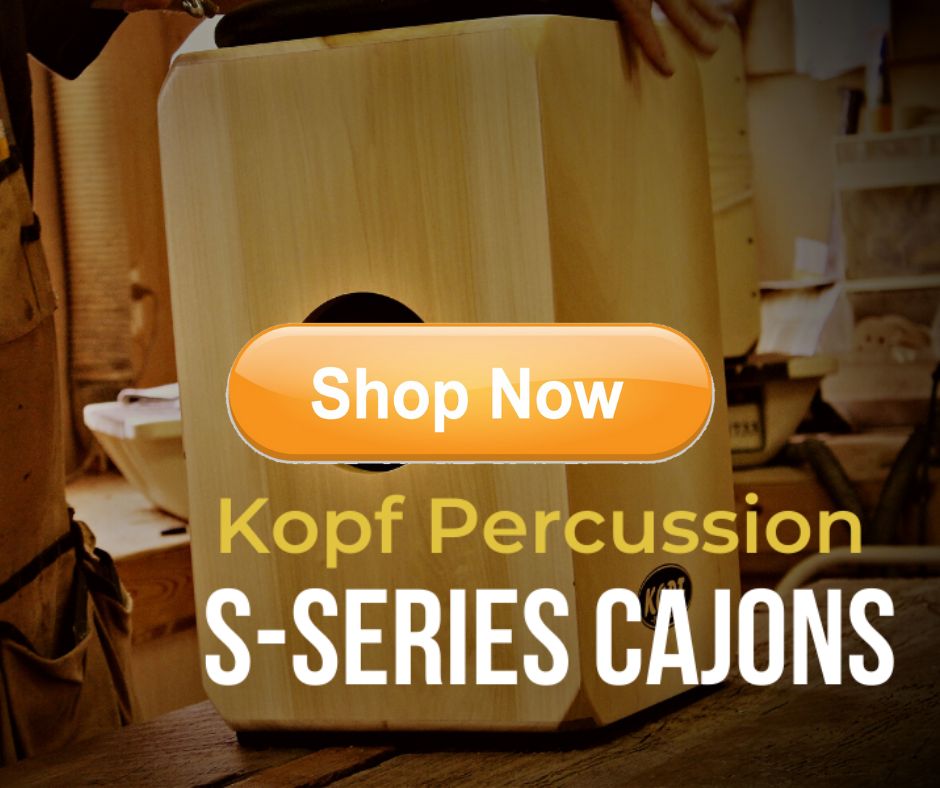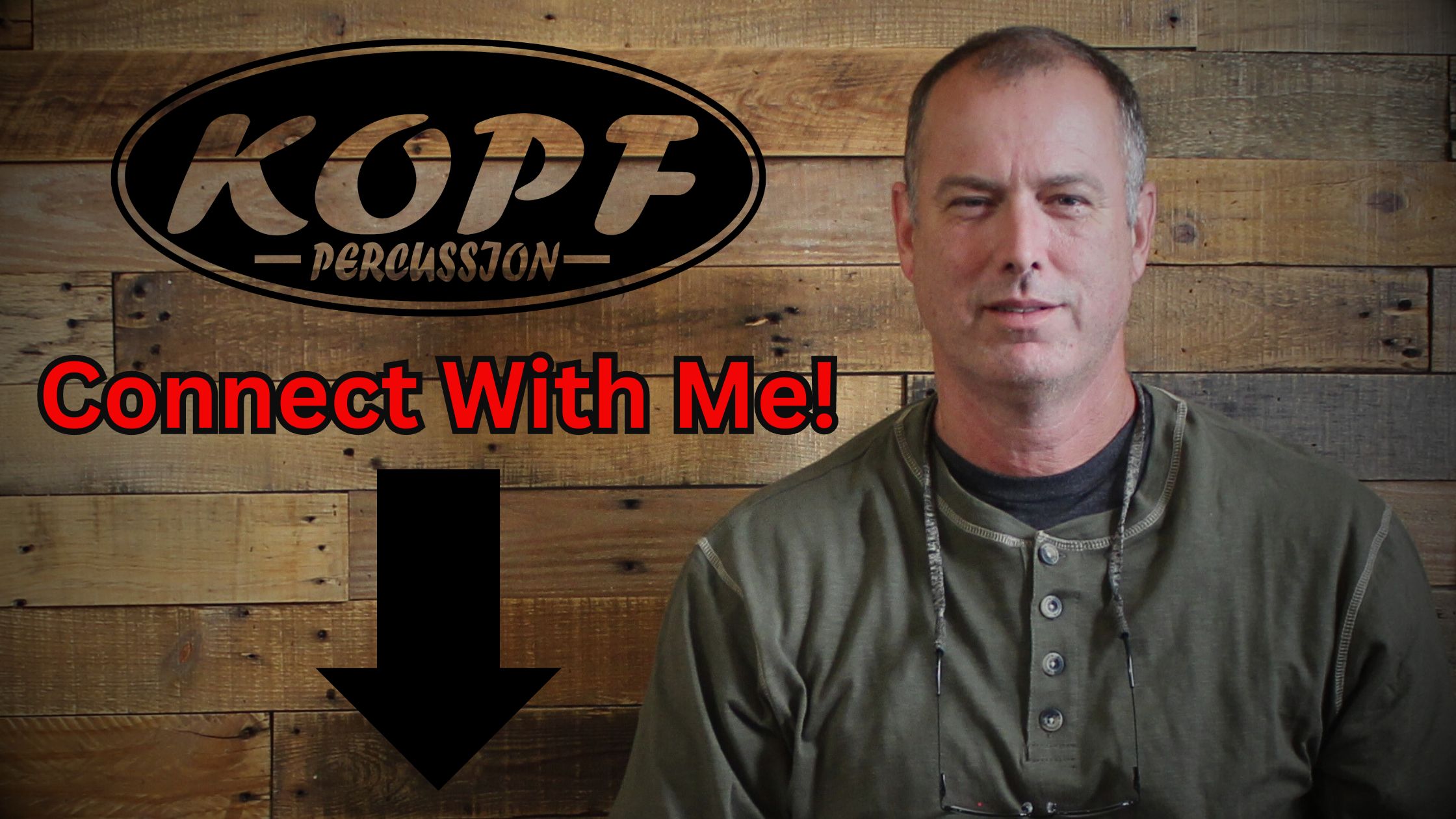Posted by Steve Head on 13th Aug 2024
Why Is It Called a Cajón? The Origins of the Name and the Instrument
As the owner of Kopf Percussion, I’ve spent years crafting cajóns and delving into their rich history and cultural significance. One question that often comes up is, "Why is it called a cajón?" Understanding the origins of the name gives us insight into the cultural roots and evolution of this unique instrument. In this blog post, I’ll explore the history of the cajón, how it got its name, and why it has become a beloved percussion instrument across the world.
The Origins of the Cajón
The word “cajón” is Spanish for “box” or “drawer,” which provides the first clue about the instrument's origins. The cajón as we know it today originated in Peru, where it was developed by African slaves in the 18th century. These slaves, who were brought to South America during the transatlantic slave trade, were often prohibited from playing their traditional drums. In response, they improvised by using everyday objects like wooden crates, boxes, and drawers to create percussion instruments that could mimic the sounds of their ancestral drums.
These makeshift instruments were known as “cajones,” reflecting their origins as simple, box-shaped objects. Over time, the cajón evolved from these rudimentary beginnings into a more refined instrument, but the name stuck. The simplicity of the name—“cajón”—perfectly encapsulates the instrument’s straightforward design: a wooden box that produces sound when struck.
The Spread of the Cajón and Its Name
While the cajón has its roots in Afro-Peruvian music, it was later embraced by other cultures, particularly in Spain, where it became an integral part of flamenco music. The instrument was introduced to Spain in the 1970s by the legendary flamenco guitarist Paco de Lucía, who was captivated by the cajón’s sound during a visit to Peru. He brought the instrument back to Spain, where it was quickly adopted by flamenco musicians.
In flamenco, the cajón took on a slightly different role and construction, but the name remained the same. This spread of the instrument to different musical genres and regions helped solidify the name “cajón” as the universal term for this type of percussion instrument.
Why the Name “Cajón” Endures
The name “cajón” endures today because it so accurately describes the instrument's form and function. At its core, the cajón is a box—a simple, versatile object that can produce a wide range of sounds depending on how it is played. This straightforwardness is part of what makes the cajón so appealing to musicians across various genres. Whether it’s used in traditional Afro-Peruvian music, flamenco, pop, rock, or even jazz, the cajón’s basic design and the name “cajón” continue to resonate.
From my perspective at Kopf Percussion, the name “cajón” also speaks to the instrument’s accessibility. It’s an instrument that anyone can pick up and play, regardless of musical background. The name “cajón” invites people to explore its possibilities, much like how its original creators used it as a means of expression in the face of adversity.
The Cajón in Modern Times
Today, the cajón has evolved from its humble beginnings into a sophisticated instrument used in many musical settings. Modern cajóns are often equipped with snares, adjustable tones, and other features that enhance their sound, but the fundamental design remains the same—a box that produces rhythm.
At Kopf Percussion, we take pride in honoring the cajón’s history while also pushing the boundaries of its design and sound. Whether we’re crafting a traditional cajón or experimenting with new materials and features, we always keep in mind the instrument’s origins and the simplicity that makes it so special.
The Significance of the Name in Percussion Craftsmanship
As a maker of cajóns, the name “cajón” carries a lot of weight. It’s a reminder of the instrument’s origins, its journey across continents, and its evolution into the versatile instrument we know today. Each cajón we build at Kopf Percussion is not just a product; it’s a continuation of a rich tradition that spans centuries and cultures.
The name also reflects the instrument’s universal appeal. Just as the cajón was created from a simple box, it can be played by anyone, anywhere, and can be adapted to fit countless musical styles. This adaptability is part of why the cajón has become such a popular instrument around the world, and why its name has remained unchanged.
Conclusion: Embracing the Name and Its Legacy
In conclusion, the cajón is called a “cajón” because of its origins as a simple box used by African slaves in Peru to create music. Over time, this basic yet powerful instrument spread to other cultures and genres, retaining its original name while gaining new features and playing styles. Today, the name “cajón” is synonymous with a versatile, accessible percussion instrument that continues to inspire musicians of all kinds.
At Kopf Percussion, we are proud to continue the tradition of the cajón, honoring its history while embracing modern innovations. Whether you’re a seasoned musician or a beginner, the cajón offers endless possibilities for rhythm and creativity—all contained within a simple, unassuming box.
As an Amazon Associate, I earn from qualifying purchases. This means that if you click on the link and make a purchase, I may receive a small commission at no extra cost to you. This helps support my work in providing quality content. Thank you for your support!




